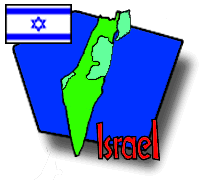Tech Fact of the Day: Jewish symbols
Person of the Day: Beni van Vlymen ![]()
Place of the Day: Jerusalem Cinematheque (JC)
For more details please contact:
- Jerusalem Cinematheque
- 11, Hebron Road
- Jerusalem 91083
- Israel
- Tel: +972-2-672.4131
- Fax +972-2-671.3044
- email: jer_cin@jer-cin.org.il
- 11, Hebron Road
Group Dispatch, January 14

"To them I will give in My house and within My walls a memorial and a name better than that of sons and daughters; I will give them an everlasting name which will not be cut off." Isaiah 56:5
Questions? Ask andrEa ![]() !
!
Return to Fast Facts
 |
 |
 |
 |
 |
|
Itinerary/ Journal |
Discussions |
About Israel |
eDscape Projects |
Scrapbook |
|
|
|
|
|
|
|
Copyright 1997-2004 BikeAbout. All rights reserved.
